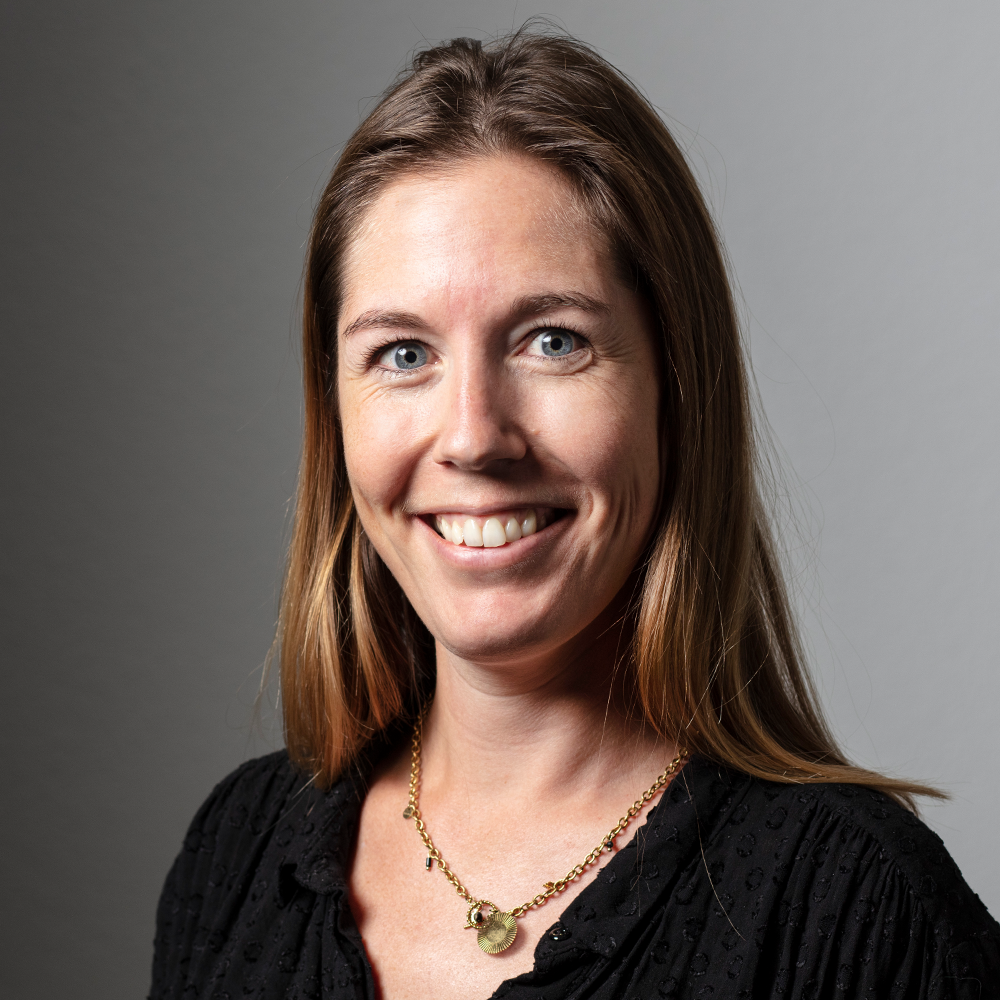
PFAS regulation: ‘forever chemical’ banned under global treaty

International negotiations in Geneva have led to a major breakthrough: the addition of a new "forever chemical" to the Stockholm Convention's blacklist. It marks another crucial step in the global effort to regulate what many now call the "poison of the century”.
Though largely overlooked by the wider public, this decision represents a significant advance in the fight against persistent organic pollutants (POPs) – highly toxic substances that linger in the environment and accumulate in living organisms.
Between April 28 and May 9, delegates from across the globe gathered in Geneva for the Conferences of the Parties to the Basel, Rotterdam and Stockholm ConventionsExternal link (BRS, see infobox below). There, member states agreed to ban the production and use of long-chain perfluorocarboxylic acids (PFCAs), a group of pollutants within the broader family of PFAS chemicals.
PFAS – short for per- and polyfluoroalkyl substances, pronounced “pee-fass” – are valued for their water-resistant and non-stick properties. As a result, they have become omnipresent in modern life. These synthetic compounds are found in everything from non-stick pans and pesticides to food packaging, cosmetics, technical clothing, tyres, ski wax, electric car batteries, and firefighting foams. Alarmingly, traces of PFAS are now being detected in mineral water, breast milk, and even human blood.
The full extent of contamination from the so-called “poison of the century” is becoming clearer by the day. Across Europe, at least 23,000 sites are believed to be polluted with PFAS, according to an investigation by the Forever Pollution ProjectExternal link. Switzerland is not immune: the country is thought to host at least 240 PFAS contamination hotspots (see map below).
These hazardous substances – dubbed “forever chemicals” – persist in the environment and are linked to a range of serious health issues, including certain cancers, thyroid disorders, fertility problems, and weakened immune function. In canton Valais, authorities have responded by banning fishing in the Stockalper Canal and several heavily polluted ponds.
Important progress, but is it enough?
The ban on the production and use of long-chain PFCAs – chemicals found in firefighting foams, textiles, cosmetics, and food packaging – takes effect across countries party to the Stockholm Convention, including Switzerland, on January 1, 2026.
“This is a step in the right direction, especially since PFCAs encompass around 200 compounds,” says Giulia Carlini, a legal expert at the Center for International Environmental Law (CIEL). “But tens of thousands of other PFAS chemicals remain completely unregulated.”
To date, only three types of PFAS had been listed under the Stockholm Convention, which aims to eliminate or restrict persistent organic pollutants: PFOS, whose use is limited to a few exceptions, and PFOA and PFHxS, both banned globally for production and use.
However, exemptions remain, Carlini notes. For the newly listed PFCAs, exceptions have been granted – most notably for the manufacture of semiconductors used in replacement parts, such as those for combustion-engine vehicles, for a transitional period of five years.
“We cannot afford five more years of poisoning,” she warns. “These substances will continue to accumulate in the environment and in living organisms. Even if PFAS production stopped tomorrow, we’d still be dealing with their consequences for decades.”
A study published in January estimated that cleaning up PFAS pollution in Europe could cost as much as €2 trillion ($2.3 trillion) over the next 20 years. Carlini states: “A total ban is urgently needed – and the sooner, the better.”
Around 350,000 chemical substances are in use globally, yet only a tiny fraction are subject to international regulation. That’s the core purpose of the so-called BRS Conventions – short for Basel, Rotterdam and Stockholm – which bring together 187 countries in Geneva. Their mission: to regulate the trade, use and disposal of the world’s most hazardous substances to protect human health and the environment.
This year’s negotiations have focused on issues including ship dismantling, the management of electronic waste, and the many regulatory grey areas surrounding toxic chemicals. In addition to PFCA, two more pollutants – chlorpyrifos (a pesticide) and chlorinated paraffins – have been added to the Stockholm Convention’s blacklist.
Banning all PFAS, however, lies beyond the scope of the Stockholm Convention, argues Martin Scheringer, professor of environmental chemistry at the federal technology institute ETH Zurich and chair of the International Panel on Chemical Pollution (IPCP). “Adding a new substance takes at least three years,” he explains. “The Convention was not designed to handle thousands of chemicals, but rather to regulate a handful of highly hazardous ones.”
Given the scale of “forever chemical” contamination, he calls for complementary measures to move towards a broader prohibition.
Momentum builds for a universal ban
As alarm over PFAS pollution grows, several countries are beginning to take legislative action. In February, France passed a groundbreaking law banning PFAS from certain consumer products – such as cosmetics, clothing textiles and ski wax – starting in 2026. The law exempts cookware and specific protective garments, including those used by the military and firefighters.
“This is an interesting first piece of legislation,” says Scheringer, “but it mostly targets consumer products where PFAS use is already being phased out. A large share of the pollution actually stems from industrial processes.”
Two sectors remain especially problematic, according to the expert. These are fluorinated polymers, such as Teflon, and fluorinated refrigerants used in cooling systems and heat pumps. “In these areas, the industry will fight to maintain the status quo. In fact, Tefal [which has been linked to PFAS pollution through its non-stick pan manufacturing] successfully lobbied to exempt Teflon-related uses from the law.”
At the EU level, a legislative proposal to ban the production and use of all PFAS compounds could come to fruition by 2026. While this would mark a significant step forward, it would still be limited to EU member states. For Carlini of CIEL, key uncertainties remain: “It’s a major proposal, but its scope and the sectors it will cover are still unclear. Behind the scenes, industry lobbies are already working to water it down.”
A January 2025 investigation by the Forever Lobbying ProjectExternal link revealed a coordinated lobbying and misinformation campaign by the chemical industry aimed at weakening the EU’s proposed PFAS ban.
Alternatives available
While some industrial sectors continue to defend the use of PFAS, alternatives are already in place across a wide range of applications. Scheringer of ETH Zurich considers it’s time to dismantle the myth that PFAS are indispensable. “These substances may be essential for certain industrial processes due to their high resistance,” he says, “but they are unnecessary in everyday consumer goods.”
Indeed, many products can be made without PFAS, including skin creams, ski wax and outdoor gear such as jackets, sleeping bags and tents. Denmark has already taken the lead by banning PFAS in food packaging. “There are plenty of examples of successful substitution,” Scheringer adds.

More
‘We must break the taboo that ‘forever chemicals’ are indispensable’
Carlini argues that banning PFAS could be a powerful driver of innovation. “The industry claims there are no alternatives, but it’s precisely by setting clear and binding rules that we create the right conditions for research and the development of safer solutions,” she says.
Pushing to end plastic pollution
Ongoing negotiations in Geneva are also paving the way for high-stakes discussions scheduled for August 2025, aimed at crafting a future global treaty to end plastic pollution.
“Conventions like Stockholm help advance controls on certain substances found in plastics, but they don’t cover the entire lifecycle,” says Carlini, who is closely following the process. “That’s why countries have committed to developing a global treaty.” She notes that many of the delegates attending the BRS Conferences will also take part in the August negotiations.
The upcoming treaty could mark a turning point in the global fight against plastic pollution. Geneva is set to be a strategic stage where competing interests and influences will play out – and potentially shape the final agreement. The question remains whether nations can unite around a global response to a crisis that clearly knows no borders.
Edited by Virginie Mangin/db/adapted from French with DeepL/ds/sb

In compliance with the JTI standards
More: SWI swissinfo.ch certified by the Journalism Trust Initiative




























You can find an overview of ongoing debates with our journalists here . Please join us!
If you want to start a conversation about a topic raised in this article or want to report factual errors, email us at english@swissinfo.ch.